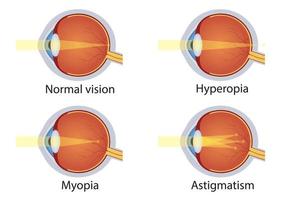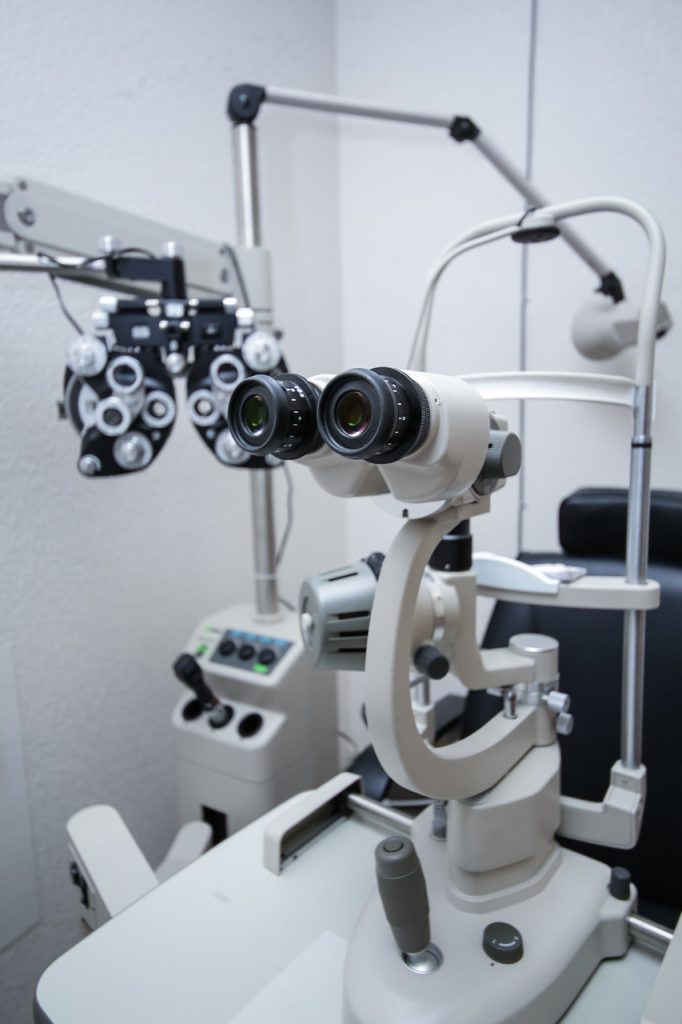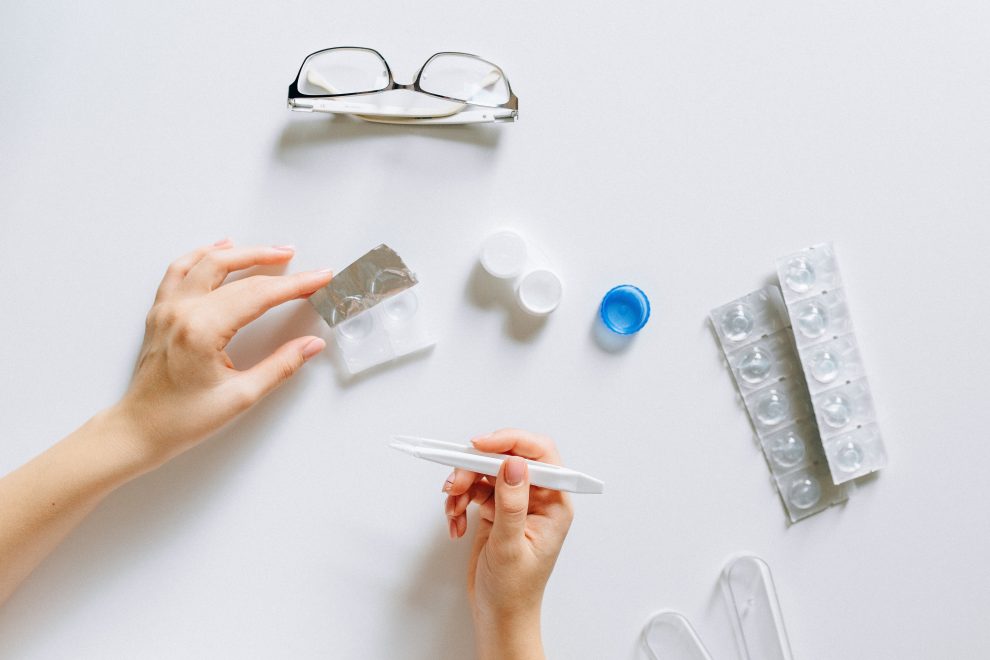Myopia, also known as nearsightedness, is a common eye condition. Individuals with myopia can see nearby objects clearly, but objects in the distance appear blurry. This can have a significant impact on daily life, making activities such as driving and watching sports difficult. In this blog post, we will delve into what myopia is, its causes, and the available treatments.
What is Myopia?
Myopia occurs when the eyeball is elongated, causing light to focus in front of the retina rather than on it. This results in distant objects appearing blurry. Myopia can range from mild to severe, and it can occur at any age. It is estimated that myopia affects approximately 30% of the global population.

The image displays an eye affected by myopia. The elongation of the eyeball causes light to focus in front of the retina, making distant objects appear blurry.
Causes of Myopia
While genetics are the primary cause of myopia, environmental factors such as prolonged work and lack of outdoor time can also contribute to the development of myopia. Other factors that can increase the risk of myopia include age, ethnicity, and certain medical conditions, such as diabetes.
Symptoms and Diagnosis of Myopia

If you’re wondering whether you might have myopia, there are a few telltale signs to watch for. Key symptoms of this condition include difficulty focusing on distant objects, squinting, eye strain, and headaches.
For children, a notable symptom is often difficulty seeing the blackboard at school. However, it’s important to remember that these symptoms can also indicate other eye conditions, so professional diagnosis is crucial.
To diagnose myopia, an optometrist will conduct a comprehensive eye examination. This will include a refraction assessment and eye health check. During a refraction assessment, the optometrist will use a phoropter or similar device to measure your refractive error and determine your prescription for glasses or contact lenses. A
An eye health check will verify that there are no other underlying eye diseases contributing to your vision problems.
Treatments for Myopia
Eyeglasses and contact lenses are the most common treatments for myopia. These corrective lenses work by altering the path of light entering the eye, allowing for clear vision. However, those who lead an active lifestyle or find glasses inconvenient may prefer refractive surgery.
Another option is refractive surgery, such as LASIK, which permanently reshapes the cornea to correct myopia. Orthokeratology, or GP lenses worn overnight to temporarily reshape the cornea, is another option for those who wish to be free of glasses or contacts during the day.
Additionally, new research has shown that low-dose atropine drops can effectively slow the progression of myopia in children.
Deciding on the best treatment for myopia depends on various factors, including your lifestyle, age, and the severity of your condition.
Ultimately, it’s best to consult with your optometrist who can provide a personalised assessment and guide you to a decision that suits your unique needs and circumstances.
Preventing Myopia
While genetics cannot be changed, there are measures that can be taken to prevent or slow the progression of myopia. Increasing time spent outdoors, taking frequent breaks during screen time, and maintaining a healthy diet with plenty of vitamins and minerals, like vitamin D, can all help prevent myopia from developing or worsening.
- Spend Time Outdoors: Numerous studies suggest that spending more time outdoors may help prevent or slow down the progression of myopia. Natural sunlight is thought to promote healthy eye development.
- Reduce Screen Time: Research has shown that prolonged time spent on digital devices can pose risks for developing myopia. So, it’s advisable to take regular breaks from screens and adjust the light settings to reduce eye strain.
- Eye Examinations: Regular eye examinations are essential as they can detect early signs of myopia and enable prompt intervention.
- Healthy Diet: Consuming a diet rich in fruits, vegetables, omega-3 fatty acids, and vitamins, especially vitamin D, can contribute to eye health and help prevent myopia.
- Proper Reading Habits: It’s important to maintain good reading habits. Ensure there’s sufficient light while reading, and avoid reading while lying down or in a moving vehicle. Also, maintain an appropriate distance between your eyes and the book or device.
- Exercise Your Eyes: Simple eye exercises can help maintain eye health. Blink frequently, focus on distant objects intermittently, and practice eye rolls or closing your eyes for a few minutes every hour to give your eyes a break.
- Use Protective Eyewear: When participating in sports or other activities that could injure the eyes, wearing protective eyewear can prevent unnecessary strain and injury.
- Proper Workstation Setup: If you spend a lot of time in front of a computer, ensure your workstation is set up to minimise eye strain. The monitor should be at eye level or slightly below and should be positioned about an arm’s length away.
Conclusion:
Myopia is a common eye condition that can impact daily life. While genetics are the primary cause, environmental factors can also contribute to its development.
Fortunately, there are a variety of treatments available to correct myopia, from eyeglasses and contact lenses to refractive surgery and atropine drops.
Moreover, taking preventative measures such as spending more time outdoors and taking screen breaks can help prevent myopia from developing or worsening. If you suspect you or a loved one may have myopia, schedule an appointment with an eye doctor to discuss your options.








Add Comment